There was a time when church basements doubled as test kitchens, and every folding table groaned under the weight of home-cooked love. From glossy casseroles bubbling in Pyrex to chilled salads wearing halos of Cool Whip and crushed pineapple, these dishes weren’t just food—they were traditions. The church potluck was a sacred ritual of community and comfort, where every bite came with a side of history and a dash of grandma’s secret ingredient.
But somewhere along the way, these humble recipes began disappearing. Replaced by store-bought shortcuts and trendy fare, the old classics were quietly pushed aside—forgotten like hymnals in the pew rack. The Johnny Marzettis, the Dump Cakes, the gloriously gooey Funeral Potatoes… once the undisputed stars of the buffet line, now they rarely make an appearance. And yet, they deserve a second act.
Why? Because these dishes knew how to feed a crowd, stretch a dollar, and wrap people in the kind of culinary comfort you can’t find in a takeout container. They were dependable, endlessly adaptable, and always made with heart. In every deviled egg and layered salad, there was pride. In every slice of Texas Sheet Cake, a story.
So we’re opening the old church cookbook once more—the one stained with time and scribbled with notes in the margins. We’re honoring the recipes that defined generations of Sunday suppers and Wednesday night gatherings. These aren’t just meals—they’re edible heirlooms. Whether you’re craving nostalgia or simply in need of a reliable crowd-pleaser, these 18 legendary church potluck recipes are ready for their long-overdue comeback. It’s time to return to the dishes that filled bellies and brought people together—one casserole, salad, and sheet cake at a time.
1. Classic Deviled Eggs
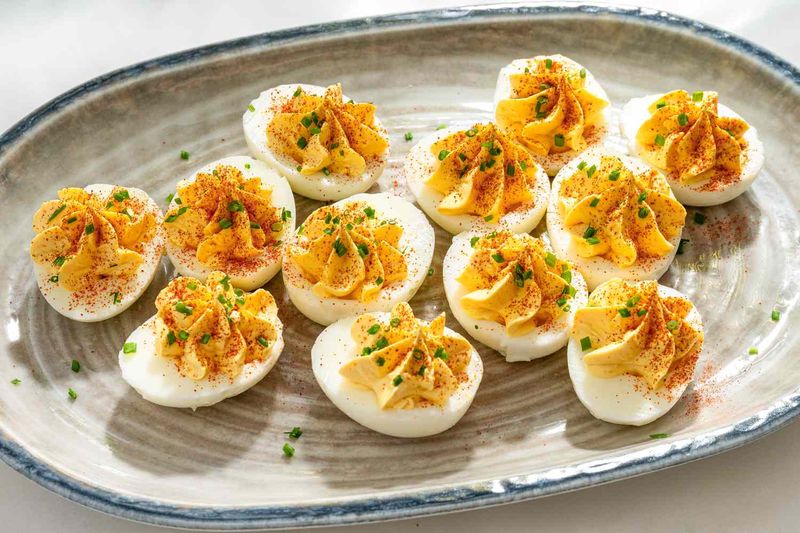
Remember when no gathering was complete without a tray of these creamy, tangy bites? Grandmothers everywhere guarded their secret recipes, some adding a splash of pickle juice for extra zing.
The perfect deviled egg balances rich yolks with just enough mayonnaise, a touch of mustard, and that signature sprinkle of paprika on top. Some adventurous cooks added relish or a dash of hot sauce for personality.
The beauty of deviled eggs lies in their simplicity and adaptability—they’re equally at home at casual picnics or elegant holiday spreads. Plus, that satisfying feeling when your egg tray returns empty is the ultimate cook’s compliment!
2. Johnny Marzetti Casserole
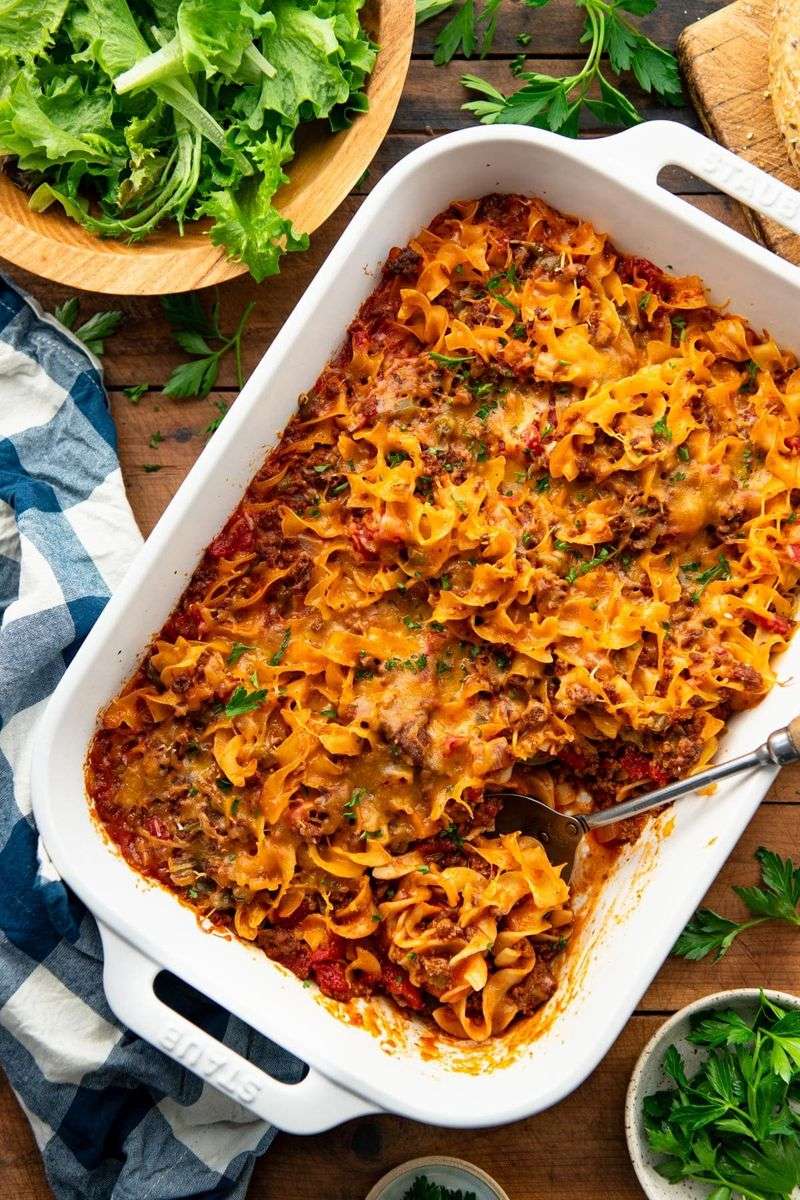
Named after an Italian restaurant owner in Columbus, Ohio, this hearty pasta bake became a Midwestern institution. The comforting combination of ground beef, tomato sauce, and melty cheese satisfied hungry crowds at minimal cost.
Church cookbooks across America featured countless variations—some with mushrooms, others with bell peppers, and debates raged over whether elbow macaroni or egg noodles made the authentic base. The genius lies in its adaptability to whatever ingredients were on hand.
This casserole exemplifies communal cooking at its finest—easily doubled for large gatherings, transportable without spills, and staying warm for late arrivals. The slightly crispy cheese edges were always the most coveted portions when serving time came around.
3. Seven-Layer Salad
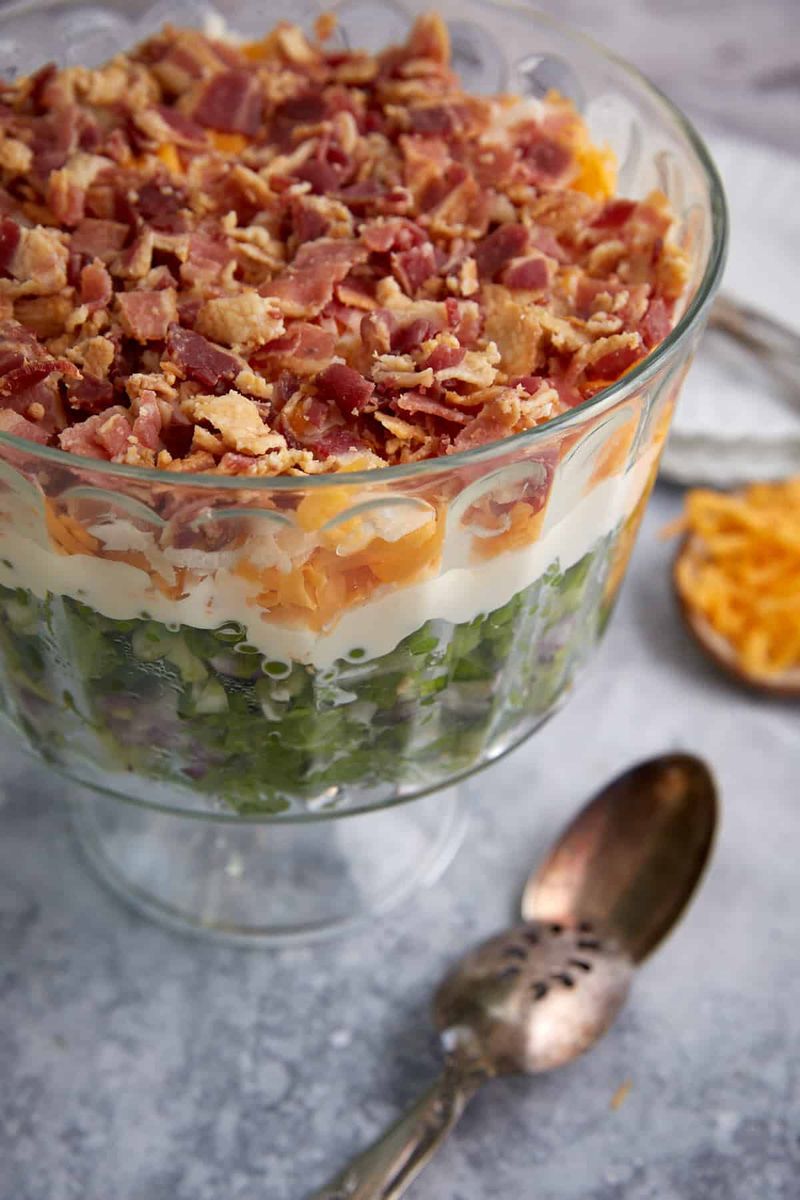
Peeking through a clear glass bowl, the colorful stripes of this showstopper salad never failed to draw crowds. Each layer—crisp iceberg lettuce, sweet peas, crunchy bacon, sharp cheese—contributes both flavor and visual appeal.
The real magic happens overnight as the creamy dressing slowly seeps down through the layers, marrying the flavors without making anything soggy. Smart cooks know to save the bacon bits for last-minute sprinkling.
Bringing this retro favorite to a modern table proves some classics never go out of style. Its make-ahead convenience makes it perfect for busy hosts who still want to impress with a homemade dish.
4. Chicken Divan
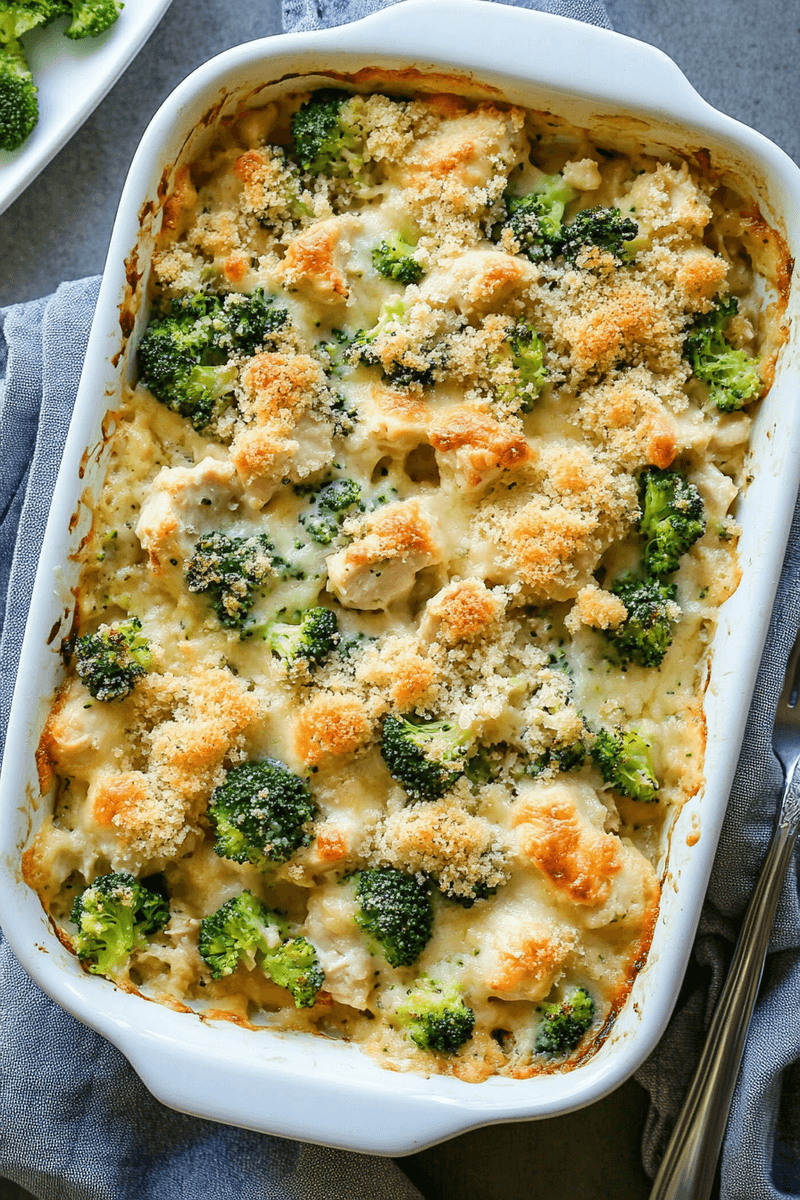
Elegant enough for Sunday best yet practical enough for weeknight suppers, Chicken Divan bridged the gap between special occasion and everyday cooking. Originally created at New York’s Divan Parisien restaurant, this dish found its way into church basements across America.
Tender broccoli spears form the foundation, topped with succulent chicken and blanketed in a rich, cheesy sauce. The breadcrumb topping provides that essential textural contrast—crispy against creamy—that marks a well-executed casserole.
While modern versions might use shortcuts like cream of chicken soup, traditionalists insist on a proper béchamel sauce with sharp cheddar folded in. Either way, this casserole represents a time when vegetables could be successfully disguised under cheese for picky eaters.
5. Texas Sheet Cake
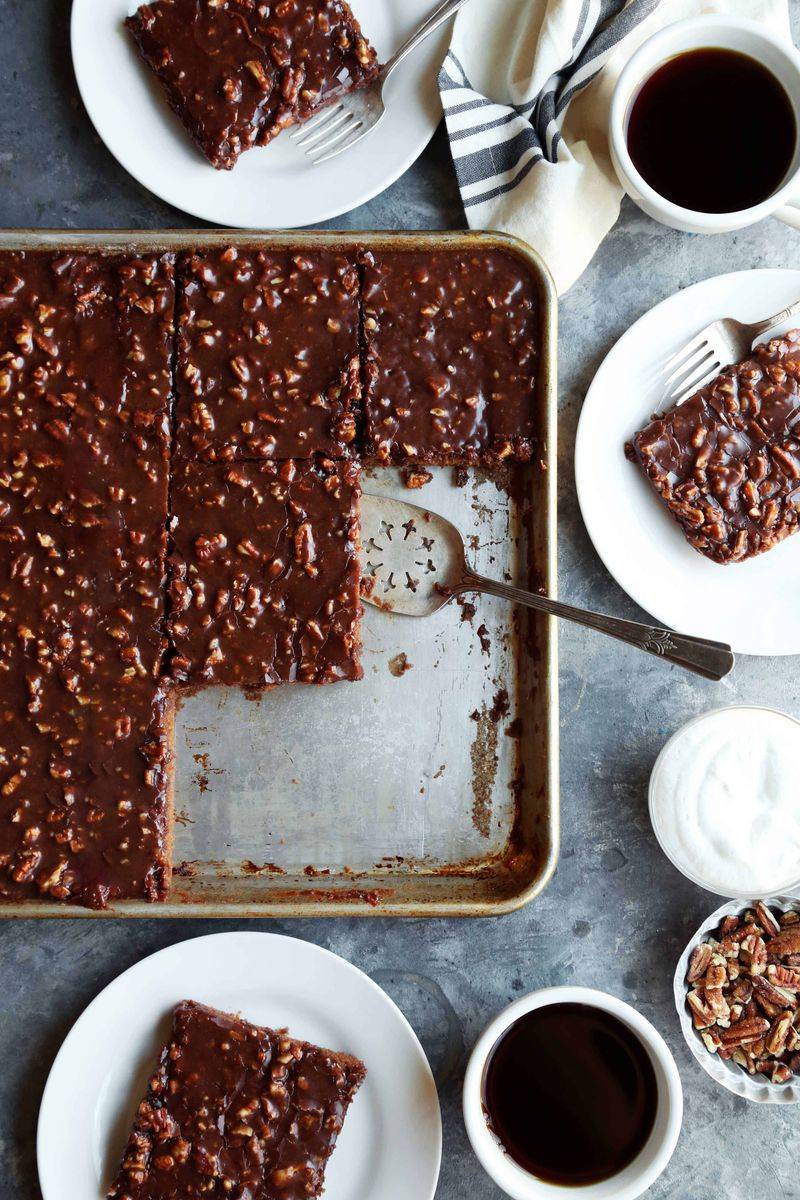
When feeding a crowd, nothing stretched further than this expansive chocolate sensation. Baked in a jelly roll pan rather than traditional cake pans, it produced enough squares to satisfy even the largest church gatherings.
The distinctive fudgy frosting, poured over the cake while still warm, created that signature glossy finish and melt-in-your-mouth texture. Traditionalists insisted on including chopped pecans in the frosting, providing essential crunch against the soft cake beneath.
The addition of buttermilk and cinnamon in many recipes gave this cake depth beyond ordinary chocolate desserts. Its practical advantages—quick to make, easy to transport, and simple to serve in neat squares—made it a potluck MVP for generations of church bakers.
6. Frogeye Salad

Despite its quirky name (which comes from the pasta’s resemblance to tiny frog eyes), this sweet pasta salad was the unexpected hit at countless fellowship meals. The tiny acini di pepe pasta creates a playful texture unlike any other dish on the table.
Sweet mandarin orange segments and pineapple chunks provide bursts of fruity flavor against the fluffy cloud-like base of whipped topping. Many recipes include miniature marshmallows for extra sweetness and a surprise bite.
Children particularly gravitated toward this whimsical creation, often requesting seconds before touching their main course. The balance of fruit and creamy sweetness makes it a refreshing counterpoint to heavier potluck fare.
7. Funeral Potatoes
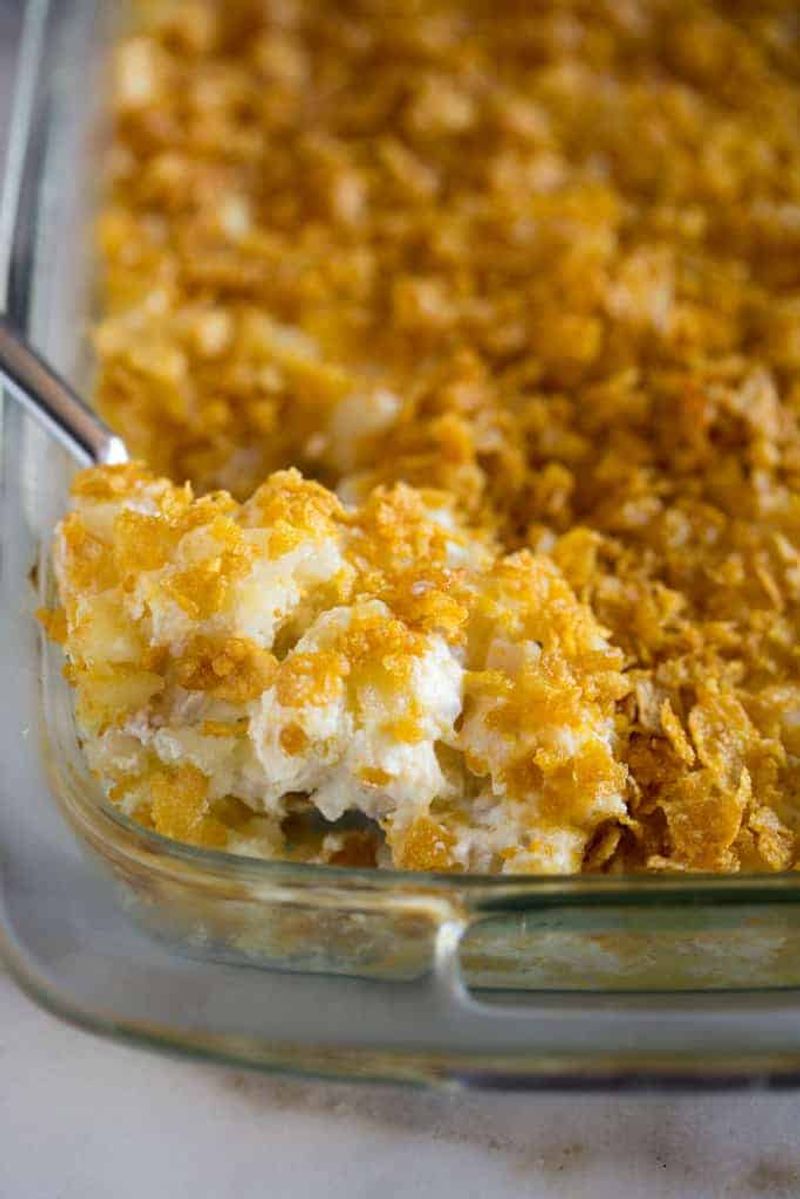
Born from necessity and kindness, these comforting potatoes earned their somber name by being the go-to dish for post-funeral gatherings. Their ability to feed many mouths with minimal effort made them invaluable during difficult times.
The magic happens when frozen hash browns meet sour cream, butter, condensed soup, and mountains of cheese. That signature cornflake topping provides the perfect textural contrast—crunchy against the creamy potato mixture beneath.
Regional variations abound, with some cooks swearing by potato chips instead of cornflakes, or adding diced ham for extra heartiness. Whatever the specifics, this dish represents community care in edible form—practical, filling, and universally comforting when comfort is most needed.
8. Haystack Supper
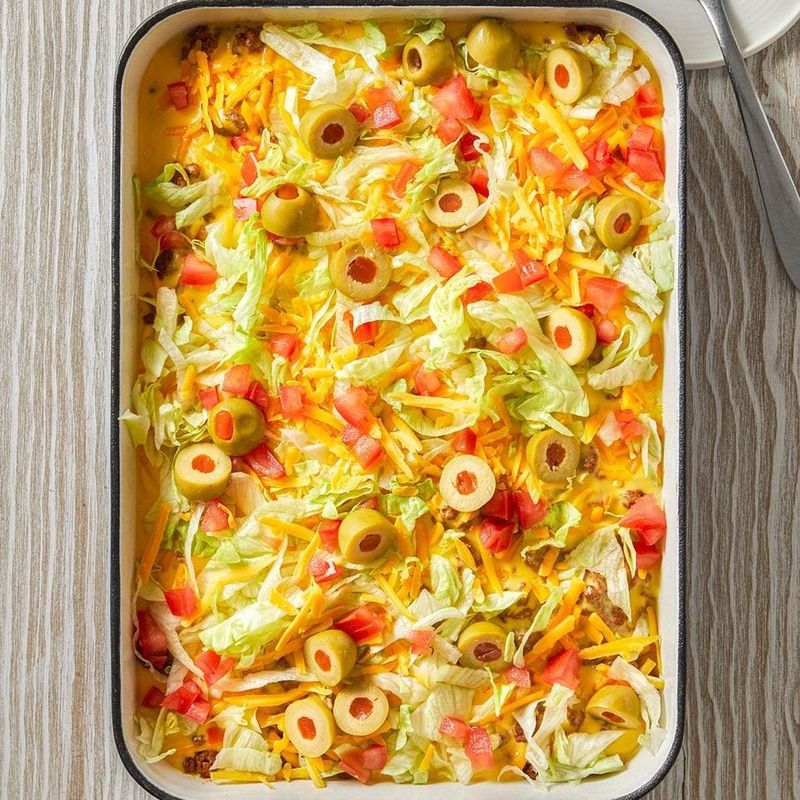
Fellowship halls across America buzzed with excitement when Haystack Night appeared on the church calendar. This interactive meal invited diners to build their own edible architecture, starting with a foundation of rice or corn chips.
Layer by delicious layer, participants would add seasoned beans, crisp lettuce, diced tomatoes, grated cheese, and dollops of sour cream. The beauty of the haystack lay in its customization—spice lovers could add jalapeños while others might pile on extra cheese.
Originally popularized in Seventh-day Adventist communities, this crowd-pleasing concept spread to churches of all denominations. The communal building process naturally sparked conversation across generations, making it as much a social activity as a meal.
9. Glorified Rice
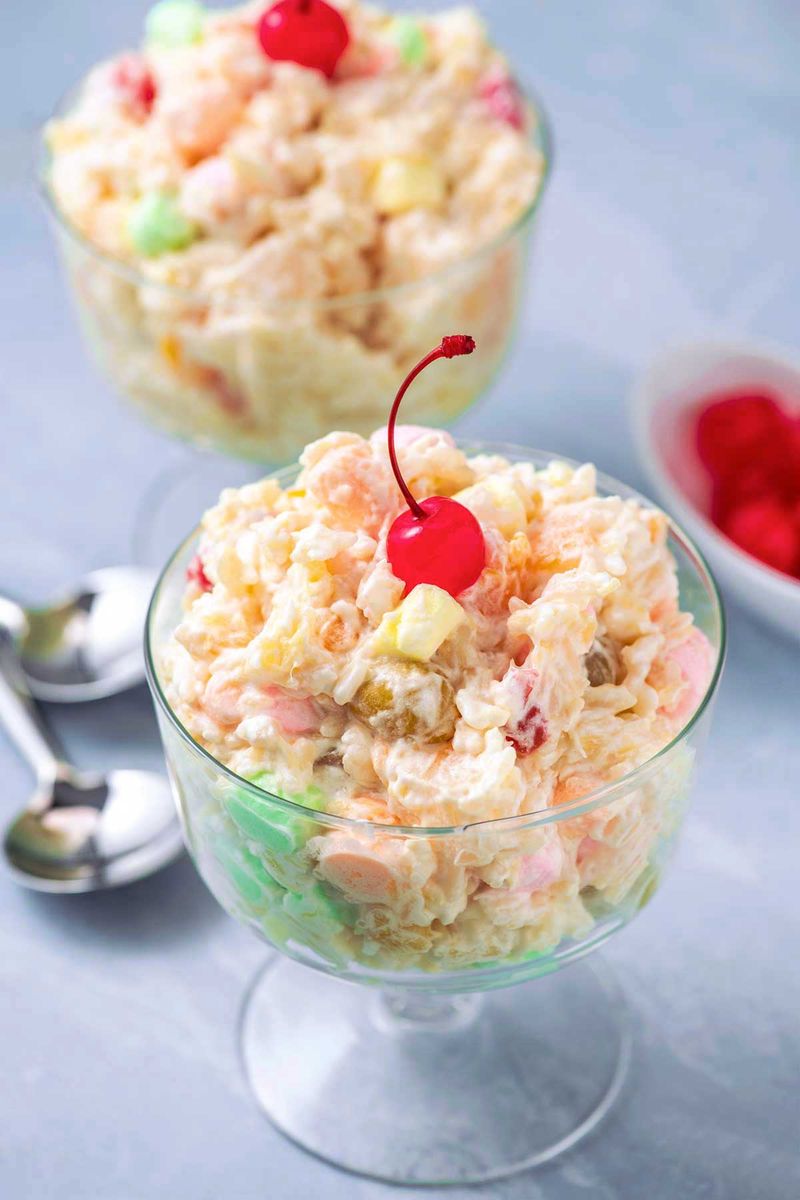
Midwestern church basements witnessed this peculiar yet beloved concoction at countless gatherings. The unexpected pairing of fluffy white rice with sweet pineapple and whipped cream puzzled outsiders but delighted those in the know.
Bright red maraschino cherries dotted throughout gave this dish its festive appearance, making it a holiday table staple. Some clever cooks added chopped nuts or miniature marshmallows for textural contrast against the creamy base.
The dish’s humble ingredients belied its special-occasion status. Named “glorified” because it transformed plain leftover rice into something celebration-worthy, this sweet side dish-meets-dessert represents the ingenuity of home cooks who could stretch simple ingredients into crowd-pleasers.
10. Million Dollar Pie
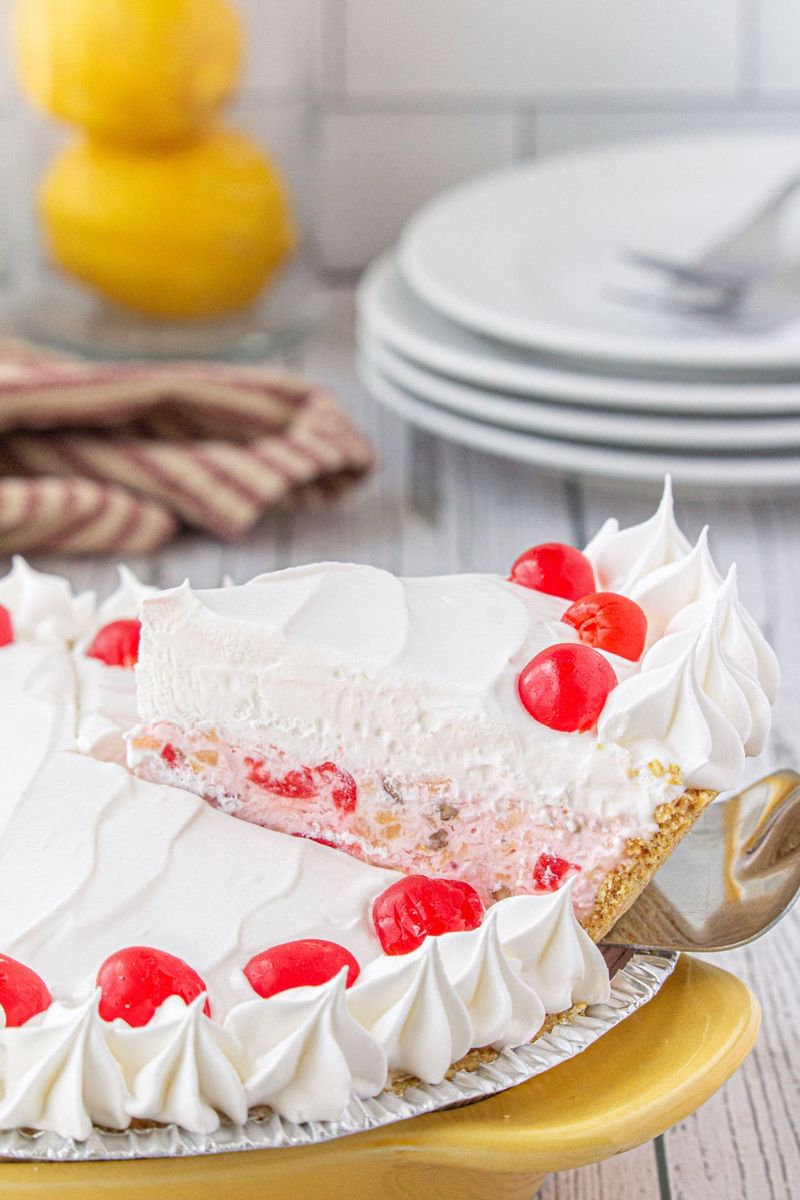
Also known as “Millionaire Pie,” this no-bake wonder earned its wealthy name by tasting luxuriously rich despite its humble ingredients. The cool, creamy filling offered welcome relief after hearty potluck main courses.
Sweet crushed pineapple and tangy lemon juice balanced each other perfectly, while the airy texture came from folding whipped topping into condensed milk. Many versions included chopped nuts and coconut for textural interest against the silky filling.
The graham cracker crust provided the perfect crunchy counterpoint to the cloud-like filling. This make-ahead marvel actually improved with overnight refrigeration, making it perfect for busy church volunteers juggling worship responsibilities with potluck preparations.
11. Chicken Spaghetti Casserole
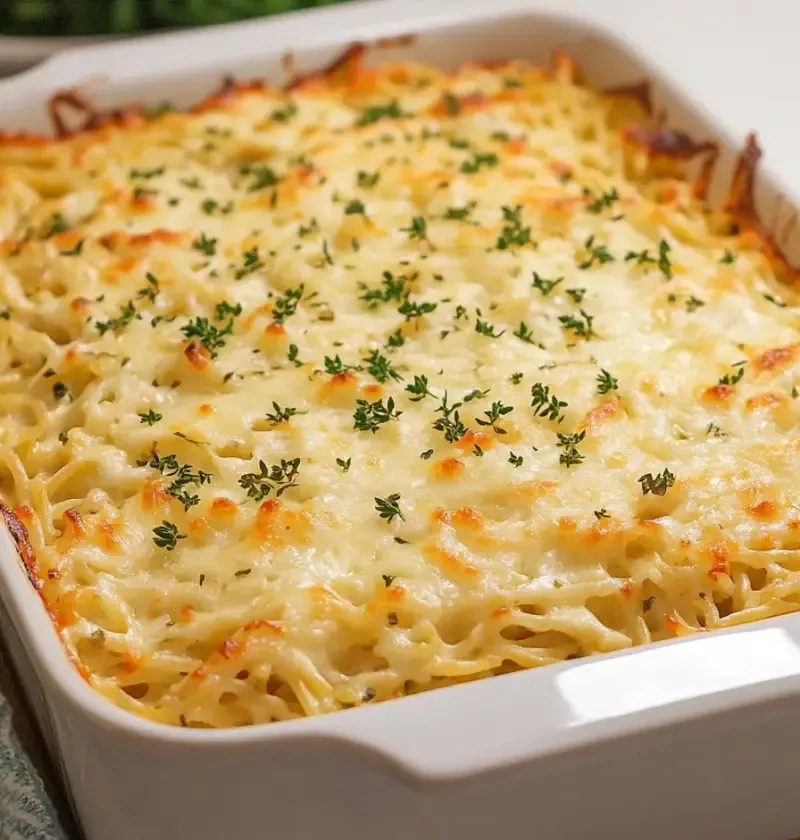
Southern church kitchens perfected this colorful casserole that stretched modest ingredients into a feast. Unlike Italian pasta dishes, this creation boldly embraces American processed cheese, creating that distinctive orange hue that signals comfort food ahead.
Tender shredded chicken and al dente spaghetti form the backbone, while diced bell peppers add pops of color and flavor. The genius lies in its make-ahead convenience—assembled on Saturday, baked on Sunday, and enjoyed by all.
Many family recipes include a dash of hot sauce or cayenne pepper for complexity without overwhelming heat. This crowd-pleaser demonstrates the beautiful fusion that happens when Italian pasta meets Southern cooking sensibilities, creating something entirely unique to American community cuisine.
12. Shout Hallelujah Potato Salad
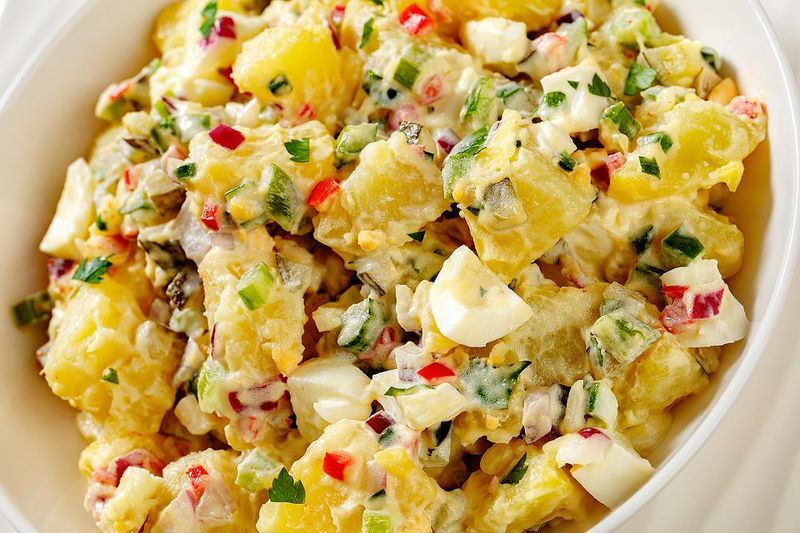
The name alone suggests the reaction this potato salad inspired! Churchgoers could spot this distinctive yellow-hued dish from across the fellowship hall, its mustard-forward dressing announcing its presence boldly.
Perfectly cooked potatoes (never mushy, never too firm) provide the canvas for this flavor explosion. Crunchy diced pickles, celery, and onions create textural interest, while hard-boiled eggs add richness and visual appeal when sliced on top.
The secret to its legendary status? Many seasoned cooks insisted on making it a day ahead, allowing the flavors to meld overnight in the refrigerator. This practical make-ahead quality made it perfect for busy church cooks balancing Sunday morning worship with potluck preparations.
13. Dump Cake
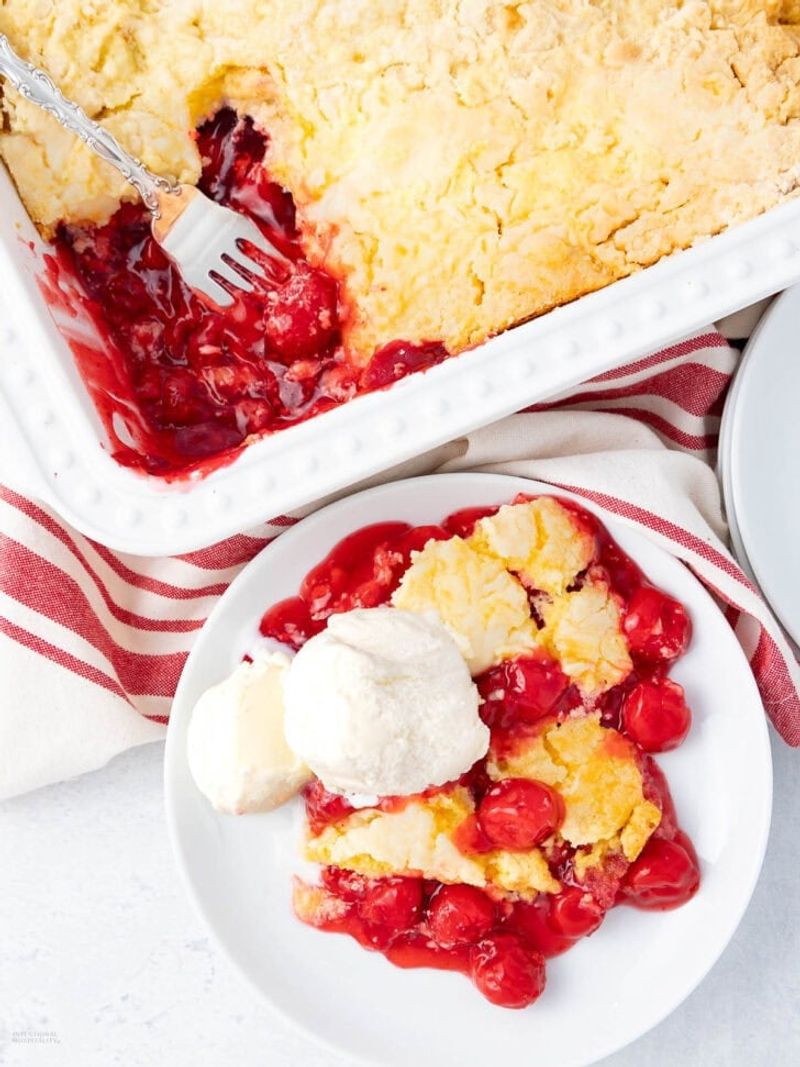
The humblest name concealed one of the cleverest desserts in the church cookbook. “Dumping” ingredients directly into the pan without mixing created a magical transformation in the oven—part cake, part cobbler, all delicious.
Canned fruit (often cherries or pineapple) formed the juicy base, while dry cake mix created the golden, buttery crust on top. Clever variations included sprinkling chopped nuts or coconut before baking for extra texture and flavor complexity.
This dessert represented the pinnacle of practical ingenuity—minimal dishes to wash, pantry staples only, and foolproof results every time. Many a church cook kept these ingredients on hand for last-minute potluck invitations or unexpected company, knowing it would reliably impress despite minimal effort.
14. Broccoli, Grape, and Pasta Salad
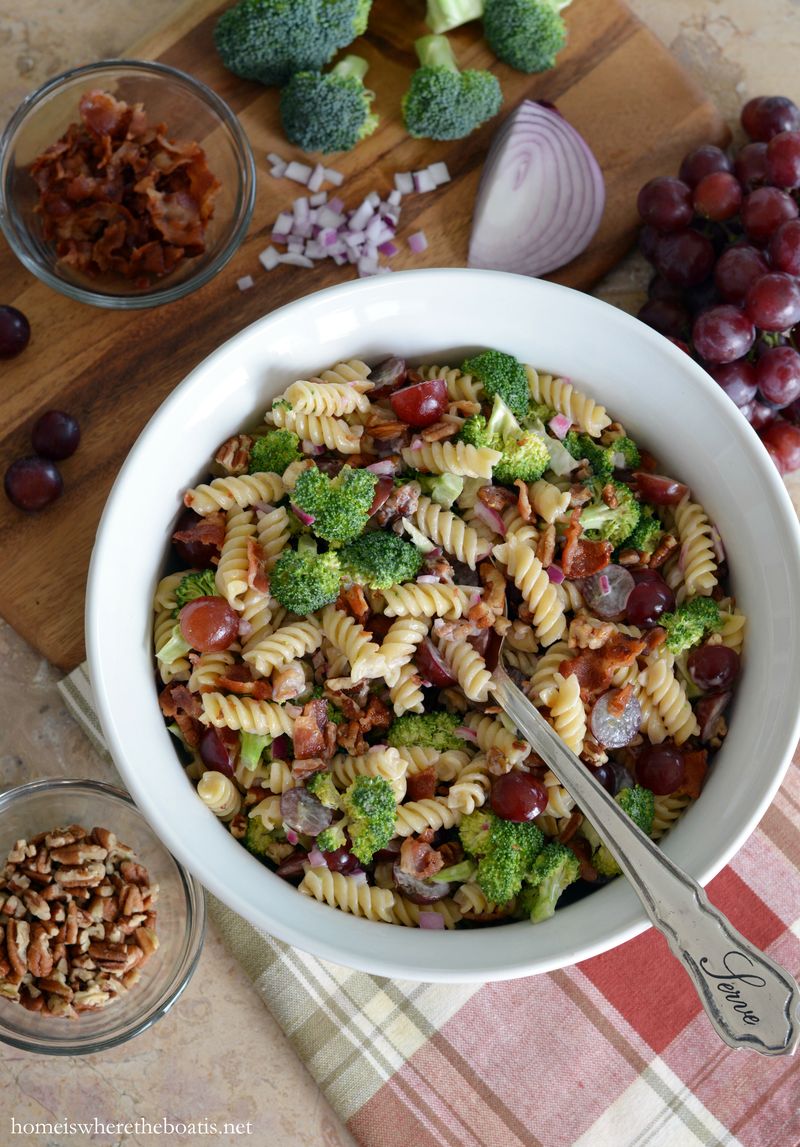
Eyebrows raised when this unconventional combination first appeared on potluck tables, but one bite converted skeptics into believers. The unexpected pairing of crisp broccoli florets with sweet, juicy grapes creates a flavor contrast that simply works.
Tender pasta provides substance while soaking up the creamy dressing. The addition of crunchy bacon bits and toasted nuts (usually pecans in Southern versions) adds savory depth and textural interest that elevates this from odd curiosity to requested favorite.
Smart potluck veterans recognized this salad’s practical advantages—it held up well during long buffet sessions without wilting and tasted even better after the flavors had time to mingle. The pretty combination of green broccoli and purple grapes also made for an attractive presentation.
15. Cornbread Casserole
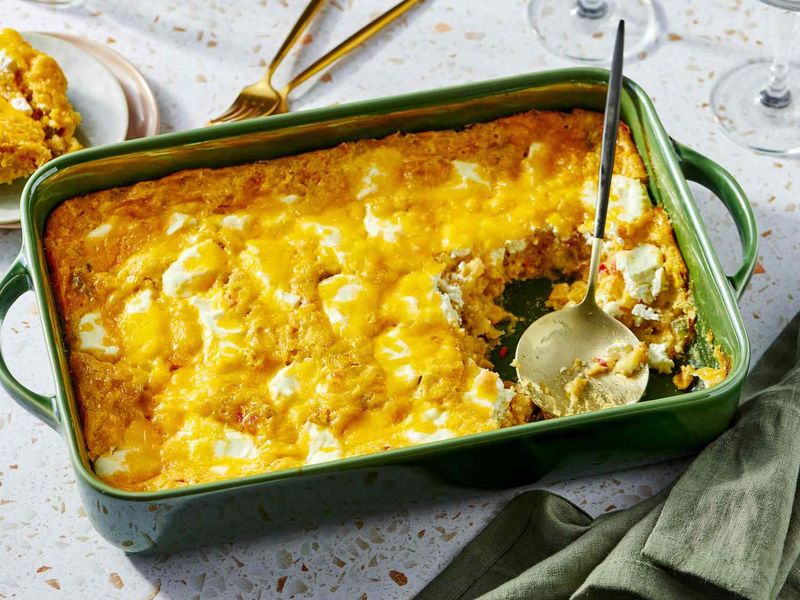
Half cornbread, half creamed corn pudding, this buttery side dish defied categorization but earned its place at every potluck table. The genius lies in its simplicity—just a few humble ingredients transform into something greater than their parts.
The texture strikes that perfect balance between bread and pudding—moist enough to eat with a fork but sturdy enough to support a pat of butter. Many church cookbook versions use boxed cornbread mix as a shortcut, proving that practicality often trumped purism in community cooking.
Regional variations might include diced jalapeños for heat or shredded cheese for richness. This versatile dish paired equally well with barbecue at summer picnics or holiday turkey in November, making it a year-round favorite across generations.
16. No-Bake Cookies
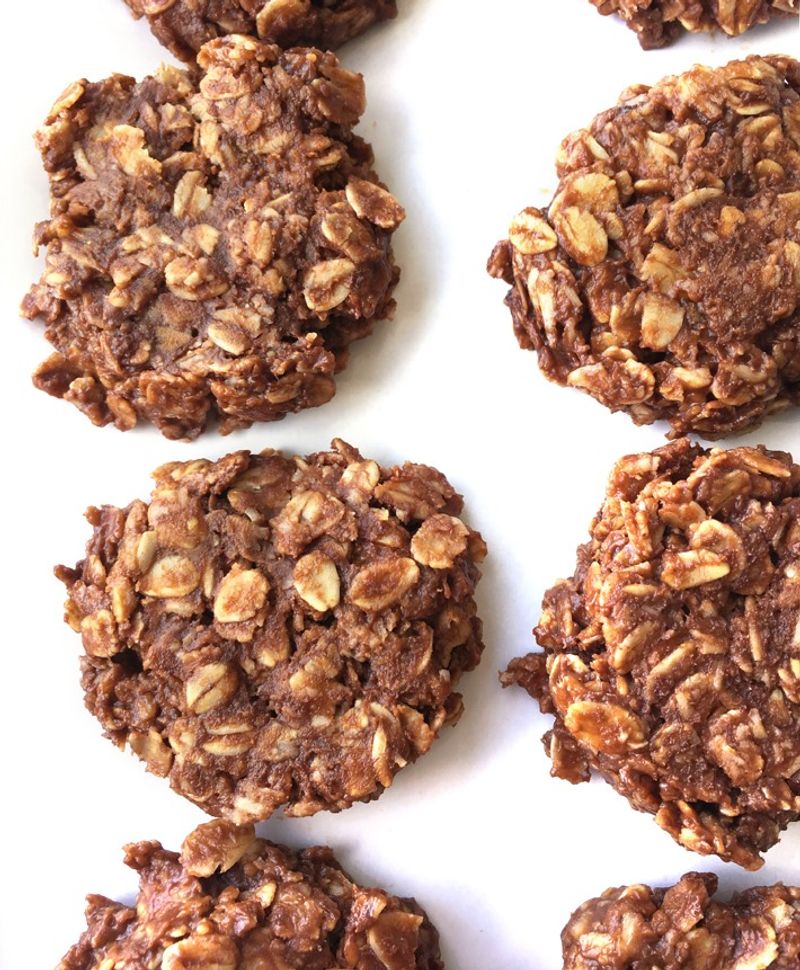
When summer heat made oven use impractical or when dessert was a last-minute thought, these stovetop wonders saved countless potluck contributions. The alchemy of boiling sugar, cocoa, and butter created a magical binding agent for oats and peanut butter.
Proper timing was crucial—boil too little and they wouldn’t set; boil too long and they’d crumble into a delicious but messy failure. Church cookbook margins often contained handwritten notes about exact boiling times for perfect results.
These humble cookies earned their potluck popularity through sheer practicality—quick to make, no special equipment needed, and transportable without fear of melting or crushing. Plus, that irresistible combination of chocolate and peanut butter ensured empty plates by gathering’s end.
17. Pineapple Upside-Down Cake
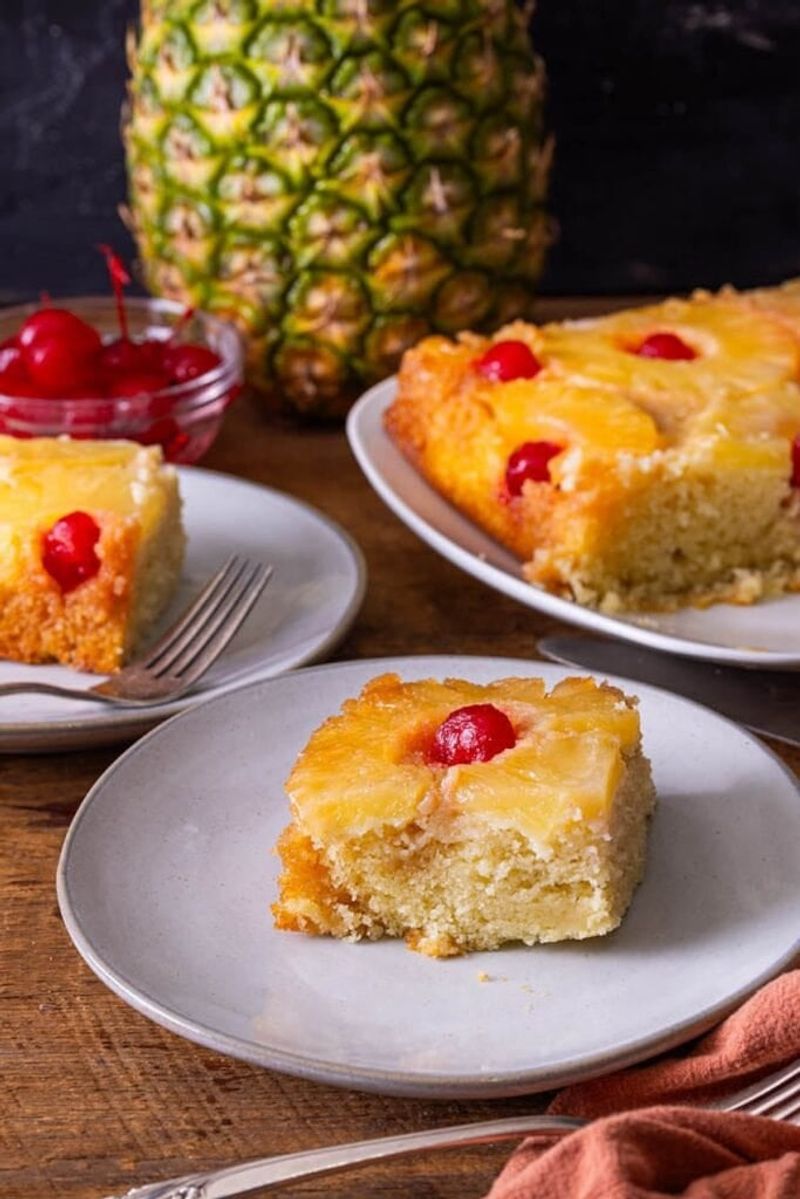
The dramatic reveal moment of this vintage dessert never failed to impress potluck attendees. Flipping the hot cake to display its caramelized pineapple rings and maraschino cherry jewels was pure culinary theater.
The contrast between the sticky, caramelized topping and fluffy yellow cake beneath created an irresistible textural experience. That hint of brown sugar crust around the edges—slightly chewy and deeply flavored—often sparked friendly competition for corner pieces.
Cast iron skillets produced the most authentic versions, with butter and brown sugar creating that signature caramel directly in the pan. This dessert represented mid-century optimism on a plate—colorful, approachable, and combining newfangled convenience ingredients (canned pineapple) with traditional cooking methods.
18. Ambrosia Salad
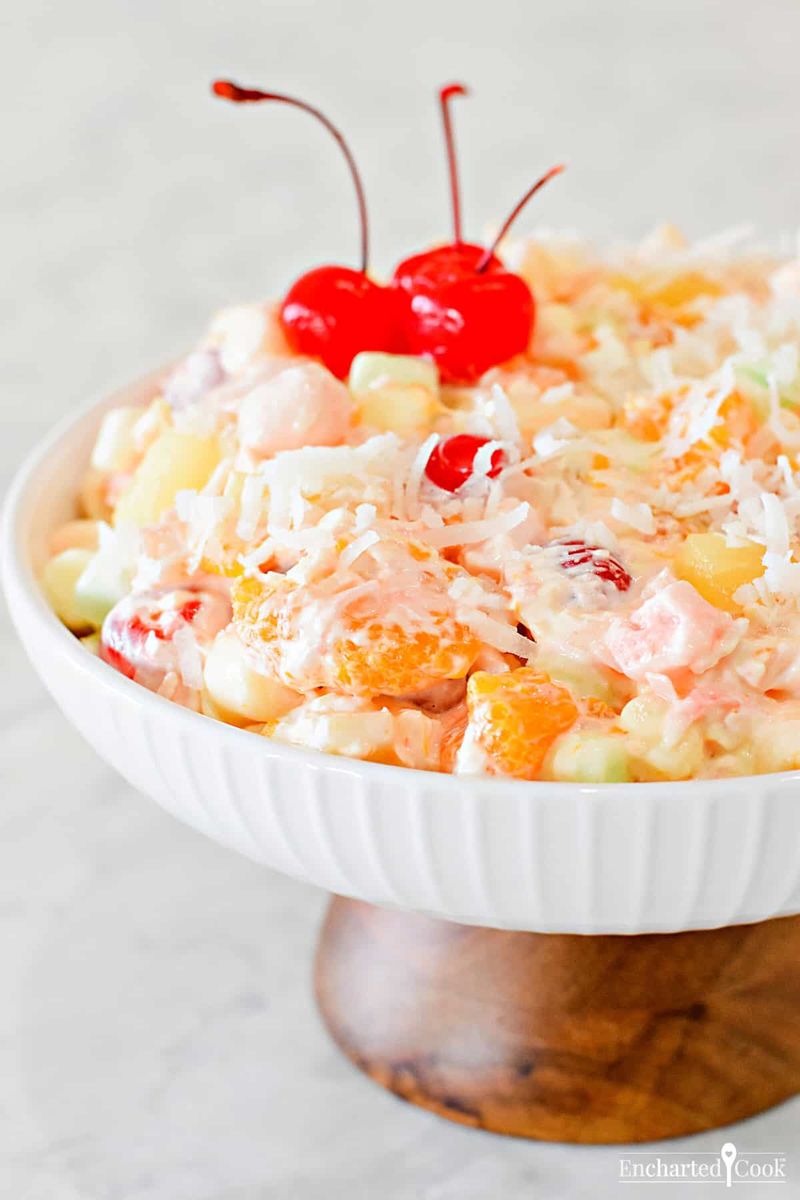
Named after the food of the Greek gods, this heavenly concoction floated somewhere between salad and dessert on potluck tables. Its cloud-like appearance came from folding juicy fruit into pillowy whipped topping.
Sweet mandarin oranges, pineapple tidbits, and maraschino cherries provided colorful pops against the snowy base. The addition of coconut flakes and miniature marshmallows created textural interest and additional sweetness that children particularly loved.
Regional variations might include bananas, grapes, or pecans depending on local preferences. This refreshing, make-ahead dish often appeared at holiday gatherings and summer picnics alike, its versatility making it a year-round favorite that brightened any potluck spread with its cheerful colors.
Leave a comment